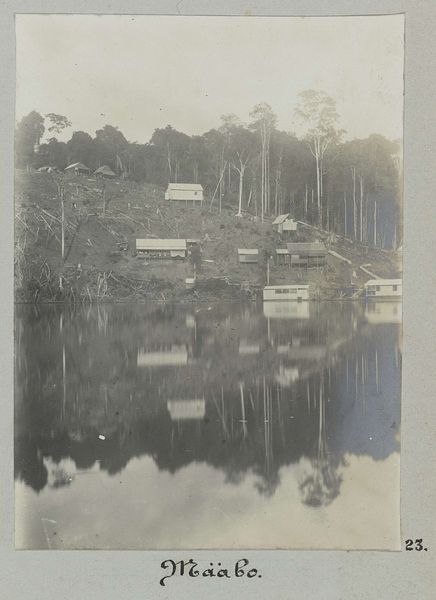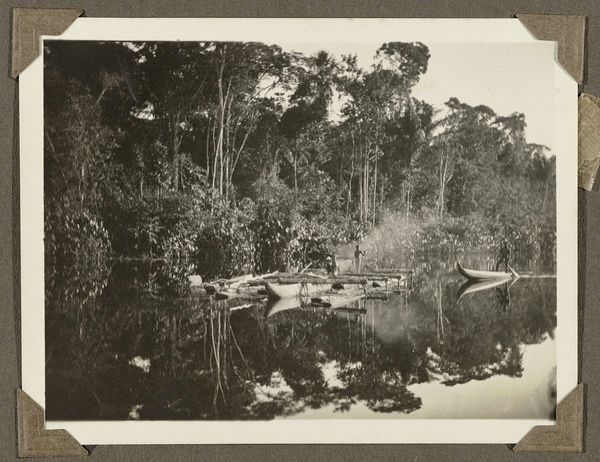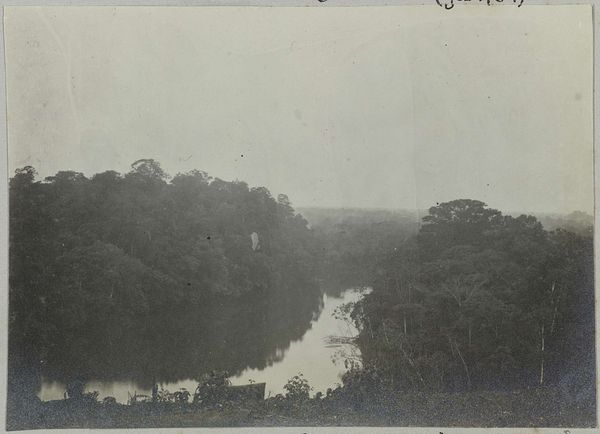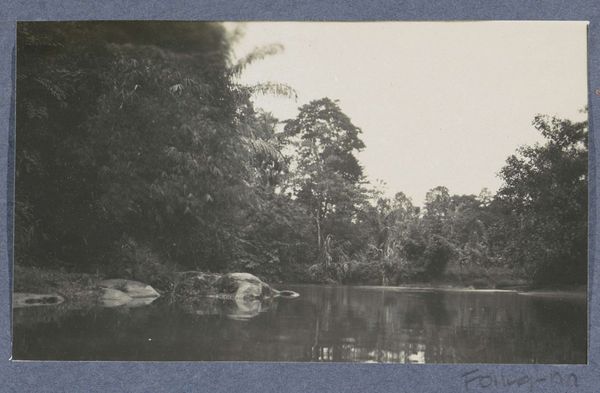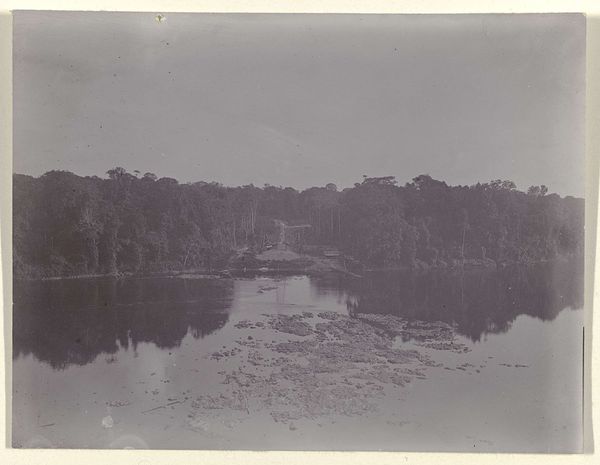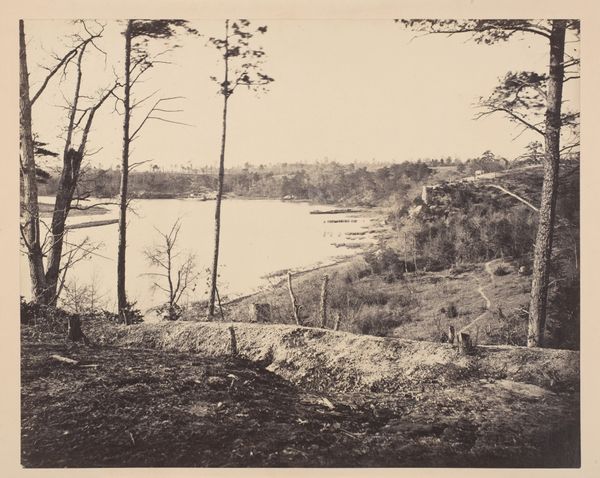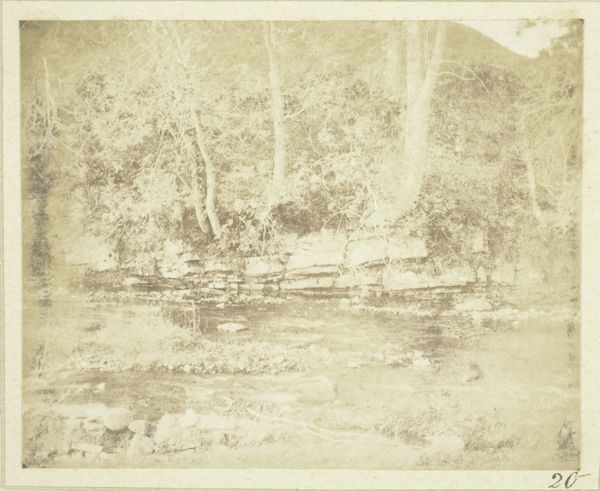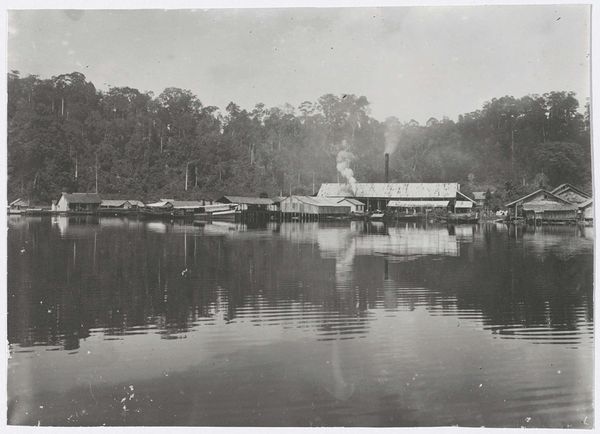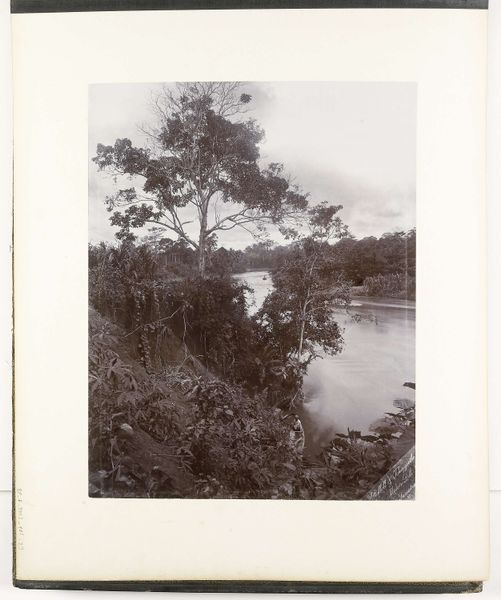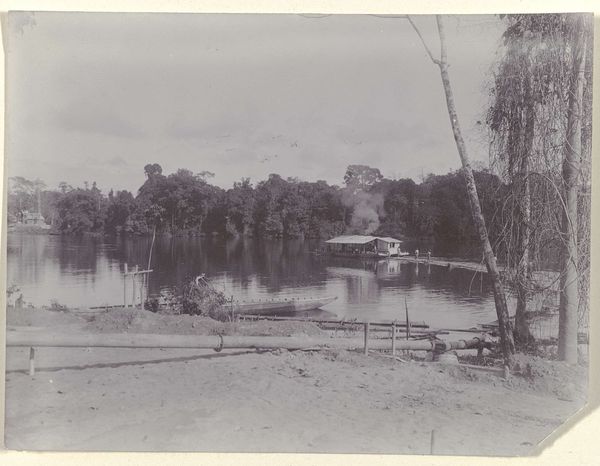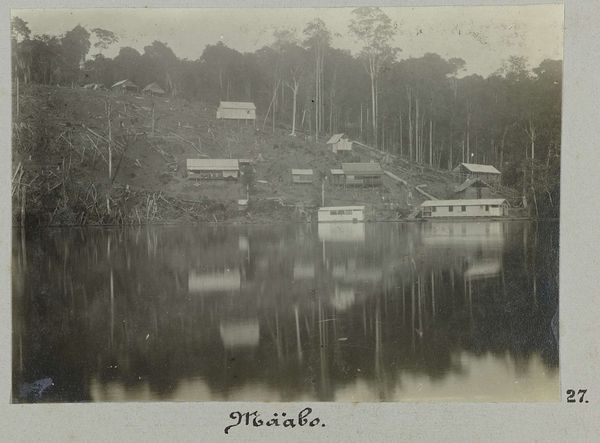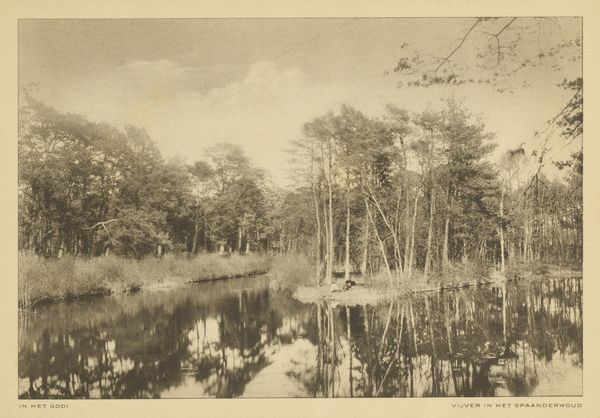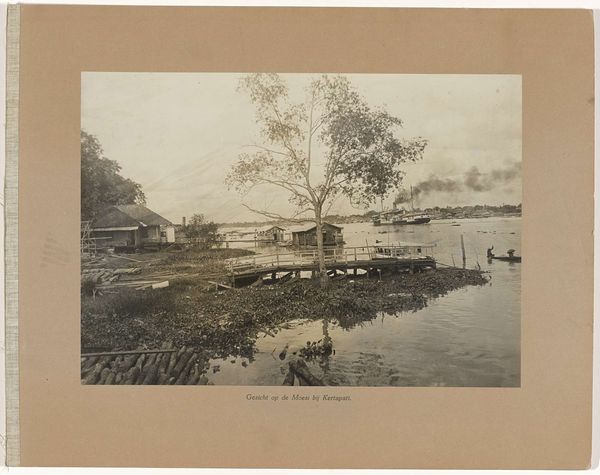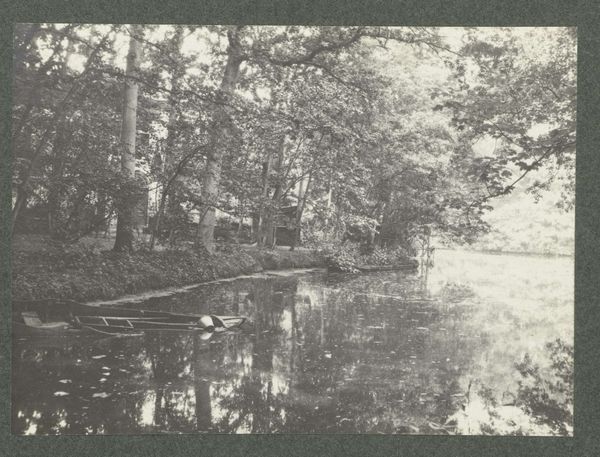
photography
#
landscape
#
photography
#
realism
Dimensions: height 110 mm, width 79 mm
Copyright: Rijks Museum: Open Domain
Curator: Hendrik Doijer’s photograph, *Huizen bij de Maabo Heuvel,* probably taken between 1903 and 1910, presents us with a striking, muted landscape. Editor: Immediately, I’m struck by the melancholy quality of the piece, a pervasive stillness that hangs in the air, reflecting from the water. There’s a pronounced horizontal structure established by the waterline. Curator: Indeed, Doijer's choice to position the waterline at the horizontal midpoint creates a powerful symmetry. The mirroring of the structures in the water acts almost as a Rorschach, demanding interpretation and visually doubling the density. What does the doubling create in terms of signification? Editor: For me, the near duplication evokes a haunting presence. I find it hard to separate from colonial narratives; the reflections hint at how European settlements encroach upon and alter the environment. The image hints at disruption of a balanced ecosystem as resources are being stripped from the hills behind. Curator: That tension between an untouched landscape and encroaching settlements is certainly present. Yet consider how Doijer’s meticulous attention to detail and tonal range elevates a seemingly documentary scene. His employment of silver gelatin print enhances clarity. It transforms a topographical survey into something with an emotive atmosphere. It emphasizes an inherent beauty in organized form, in pattern and the subtleties of natural lighting. Editor: True, there's something about the visual language, those repetitive rectangular structures of human construction, that clashes so fundamentally with nature's forms. But those reflections soften that imposition, as does the removal of color from the piece. This emphasizes texture and light over reality. This brings forth more poignant questions on how colonialism seeks to not only alter the world, but represent that alteration as natural or inevitable. Curator: Well, Doijer’s skill prompts viewers to see both destruction and the attempt at a visual harmony. Whether he intentionally meant to stir such debate through design alone… Editor: …It shows us, as always, the medium is deeply implicated and far from neutral. Thank you for shedding some light on his creative decisions, which provide important counterpoints to the more critical, political readings.
Comments
No comments
Be the first to comment and join the conversation on the ultimate creative platform.
